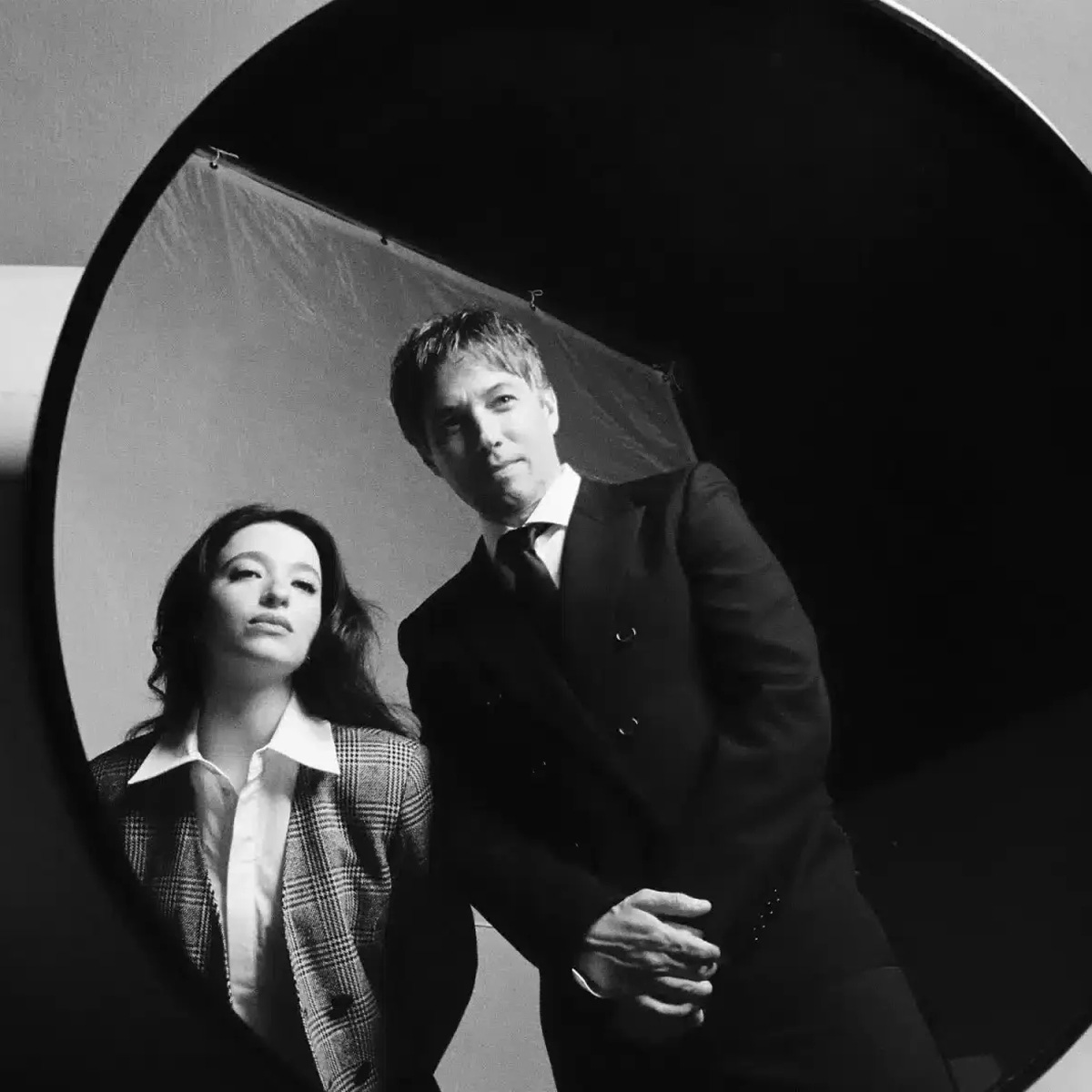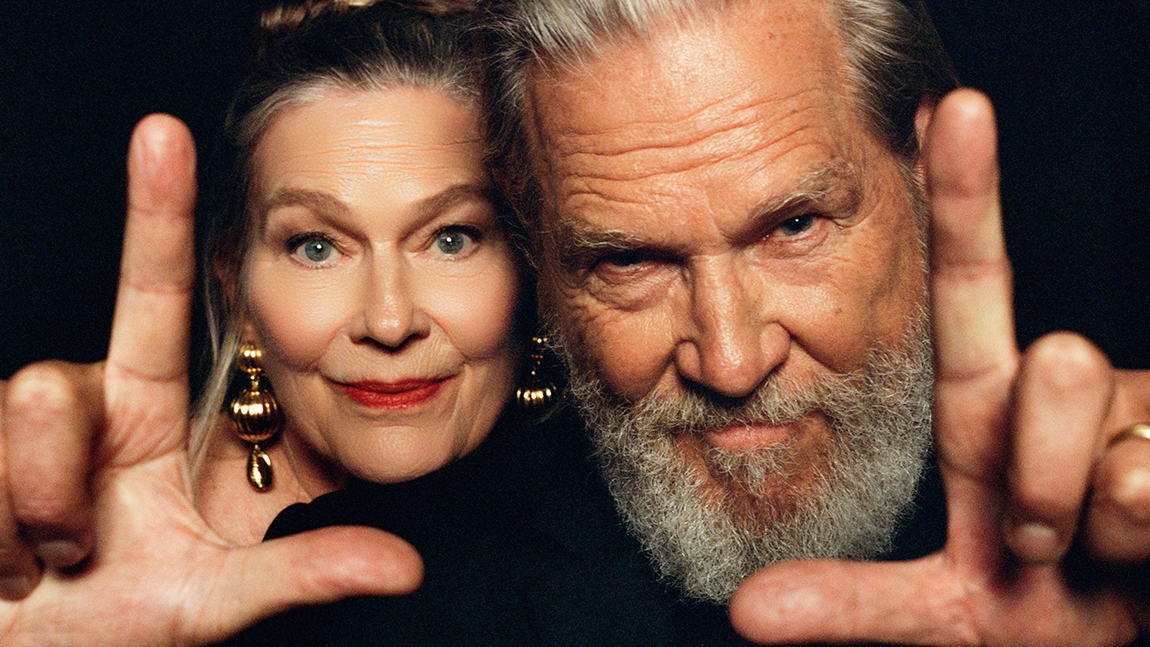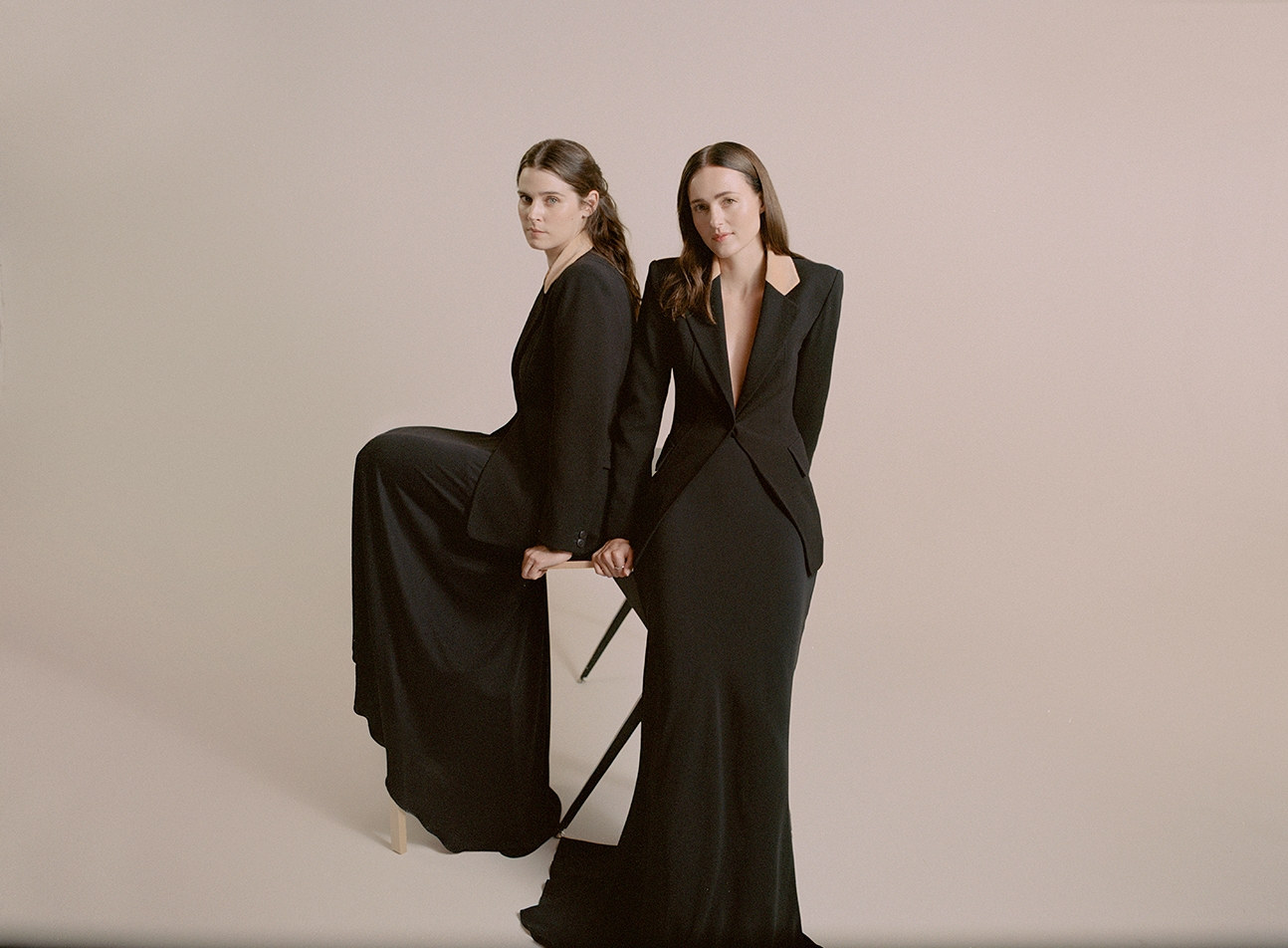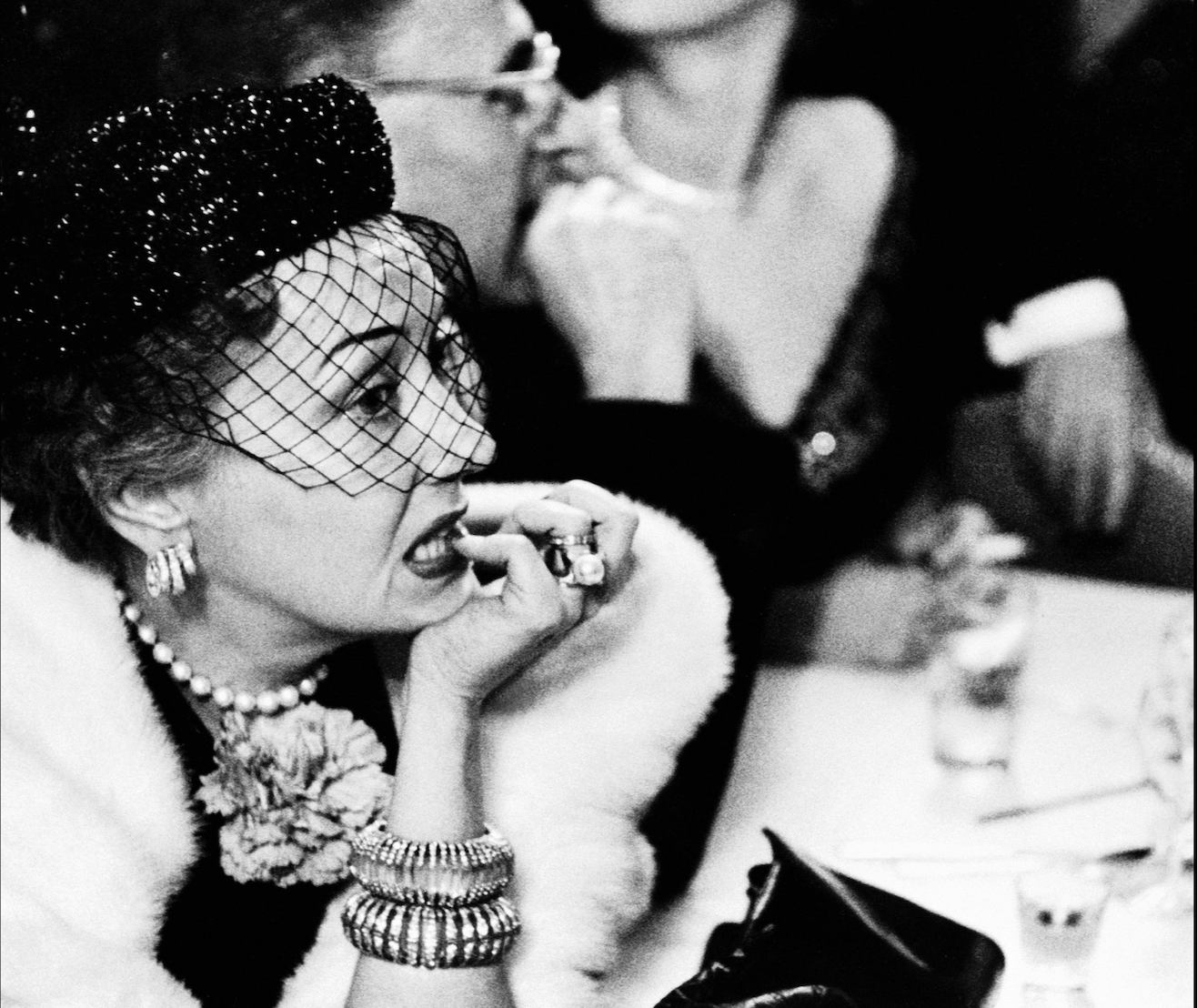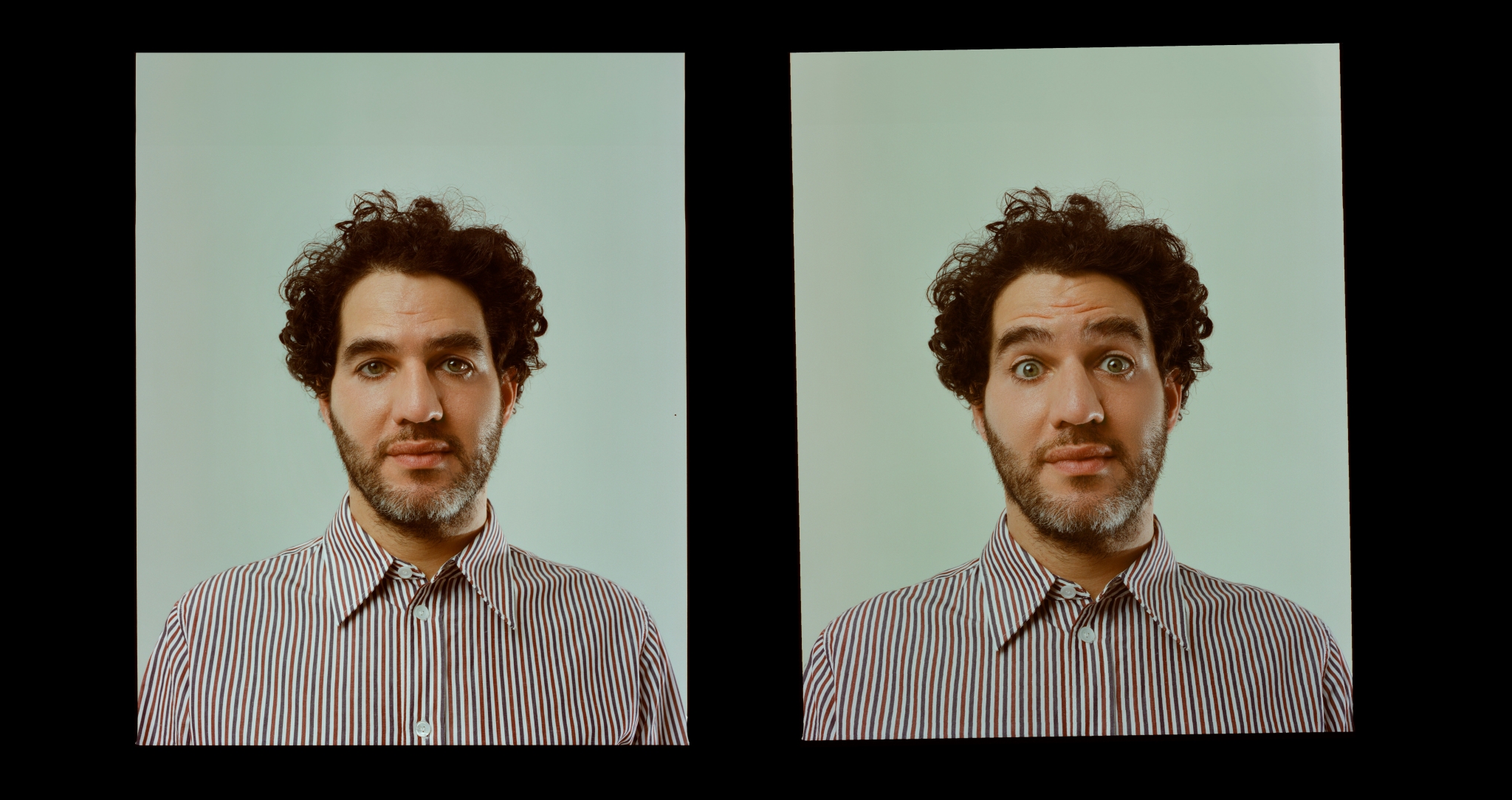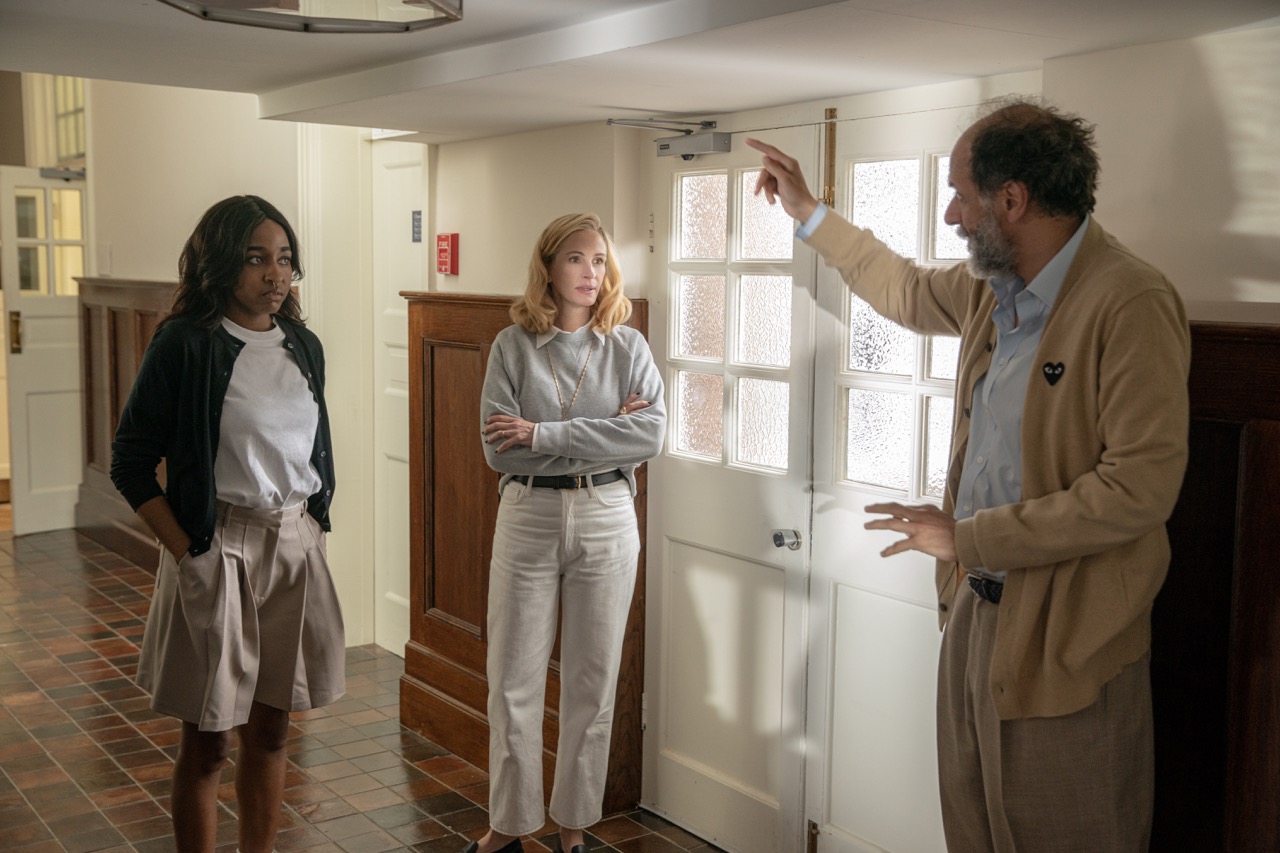

Fashion stylist Olivia Pezzente speaks to Giulia Piersanti about creating the impeccably stylish costumes for Luca Guadagnino’s chic campus drama After the Hunt.
Olivia Pezzente: This is your sixth collaboration with Luca Guadagnino—from A Bigger Splash (2015) to After the Hunt (2025). Has your creative process together evolved over the years?
Giulia Piersanti: It’s been 10 years since our first film together. ABS was my first film and because I’d never assisted anyone I had to learn on the job the technicalities of preparing a film. Today Luca and I have a method of work that allows the creative process to be more fluid and conversational and works very well for both of us.
OP: When you first read the script, where did your initial instincts take you in terms of costume? And how did those ideas shift as the process unfolded?
GP: Usually, once I read the script and Luca gives me his input about the characters I first start to research the characters’ personalities. I don’t necessarily jump into academic world research as a first approach. That comes after. I first focus on what I can say about them. I often do that with characters, even small characters, like a one-scene nurse for example is she into heavy metal music? Or does the cashier at the super market read a specific type of book. In that case what would they wear under the uniform or what accessories etc. I think about the personalities and their backgrounds first then I study the setting as an overall micro world (academic) and that’s when I start to say ok so she is a professor in an ivy league etc. I try to give layers and read between the lines of the script.
OP: There’s a clear visual relationship between Alma and Maggie’s styles. What choices did you make to distinguish them? Did you consciously use more high-end brands for Alma, and more “student-accessible” labels for Maggie?
GP: I did use high-end brands for Alma but only because they were brands where I knew I would find what suited my need for the type of styling and proportions I was looking for. I was not interested in saying that Alma would dress in The Row necessarily.
I wanted Alma to look like she was an upper class worldly intellectual woman in a man’s world, smart about her wardrobe, sticking to classic archetype pieces that made her look put together and chic in an effortless way, practical with a day to day routine to her styling. I didn’t want her to look cozy or comfy.
Maggie looks up to her and tries to imitate her. Once I had decided what Alma would wear I tried to replicate her wardrobe with younger more preppy collegiate pieces. As if she took her clothes and tried to replicate Alma’s look but younger and in a more Gen-Z styling.
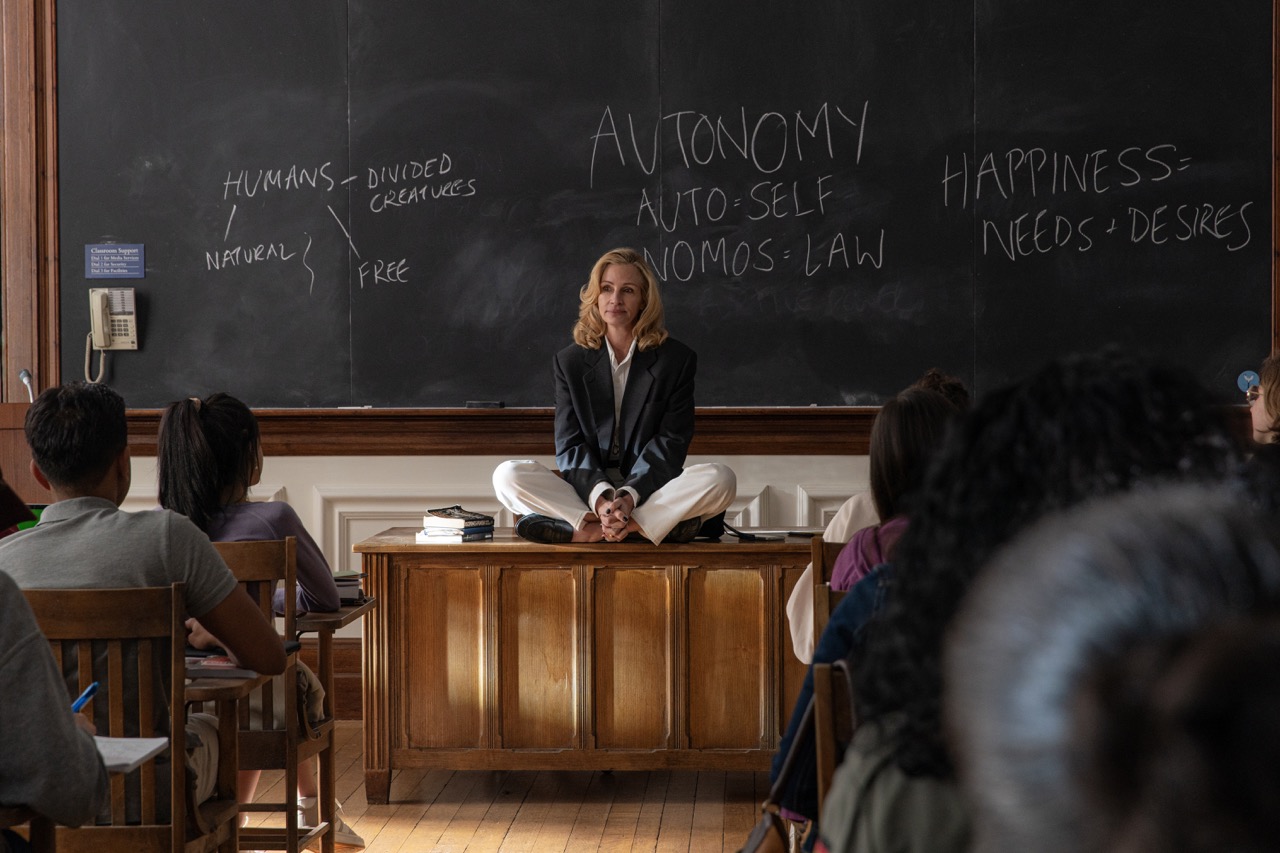
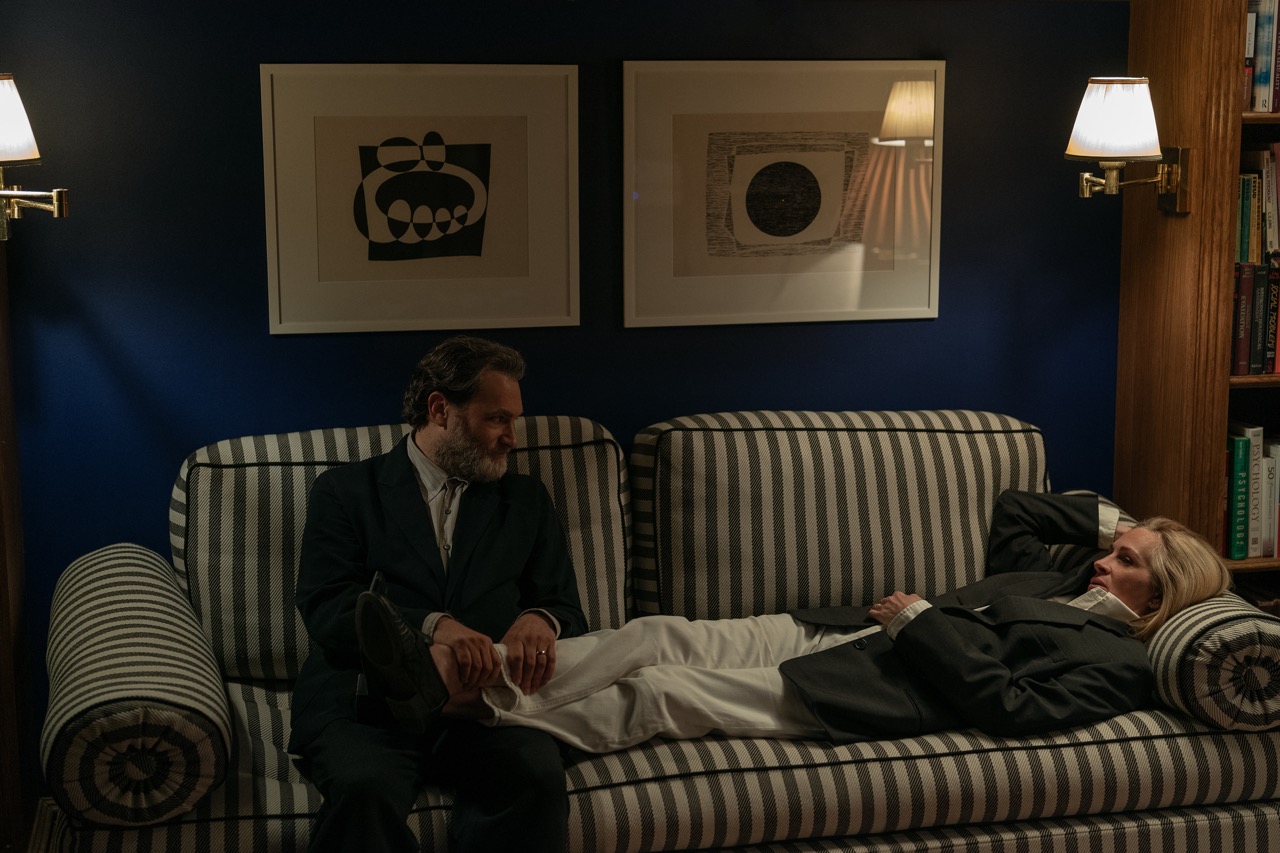
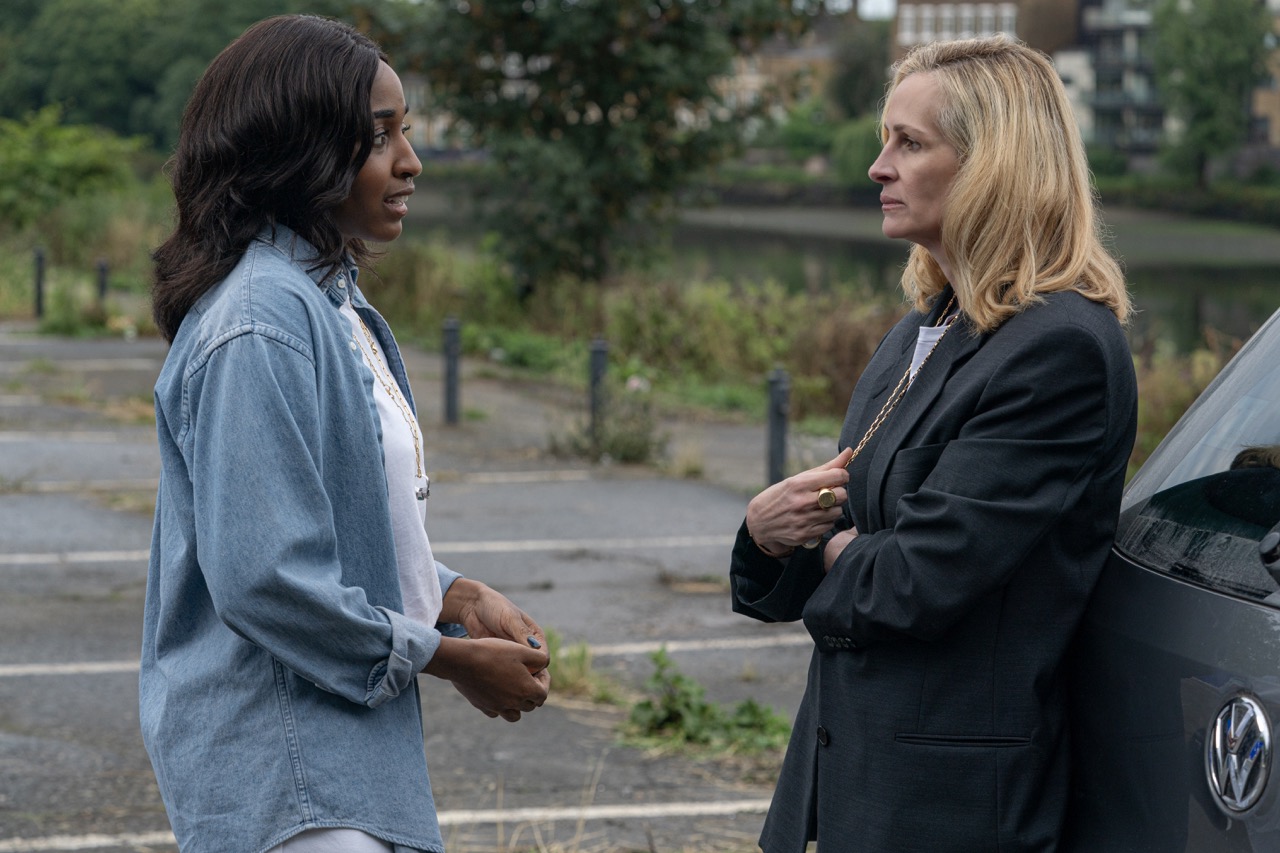
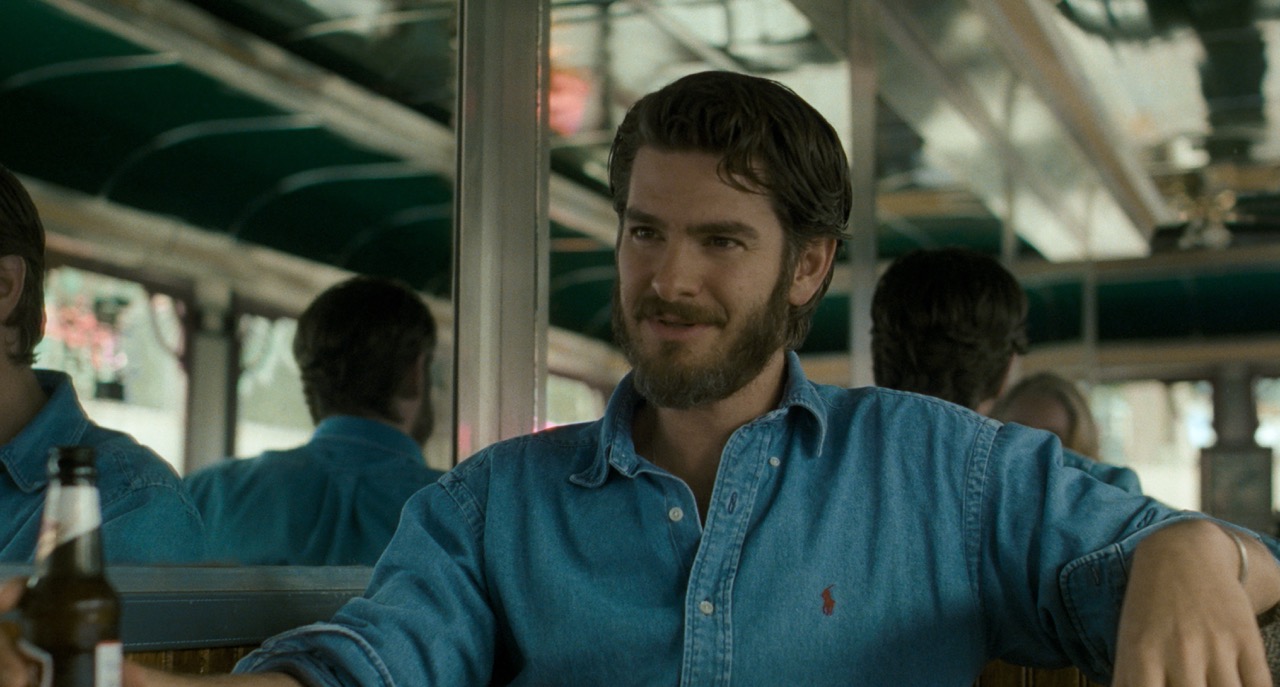
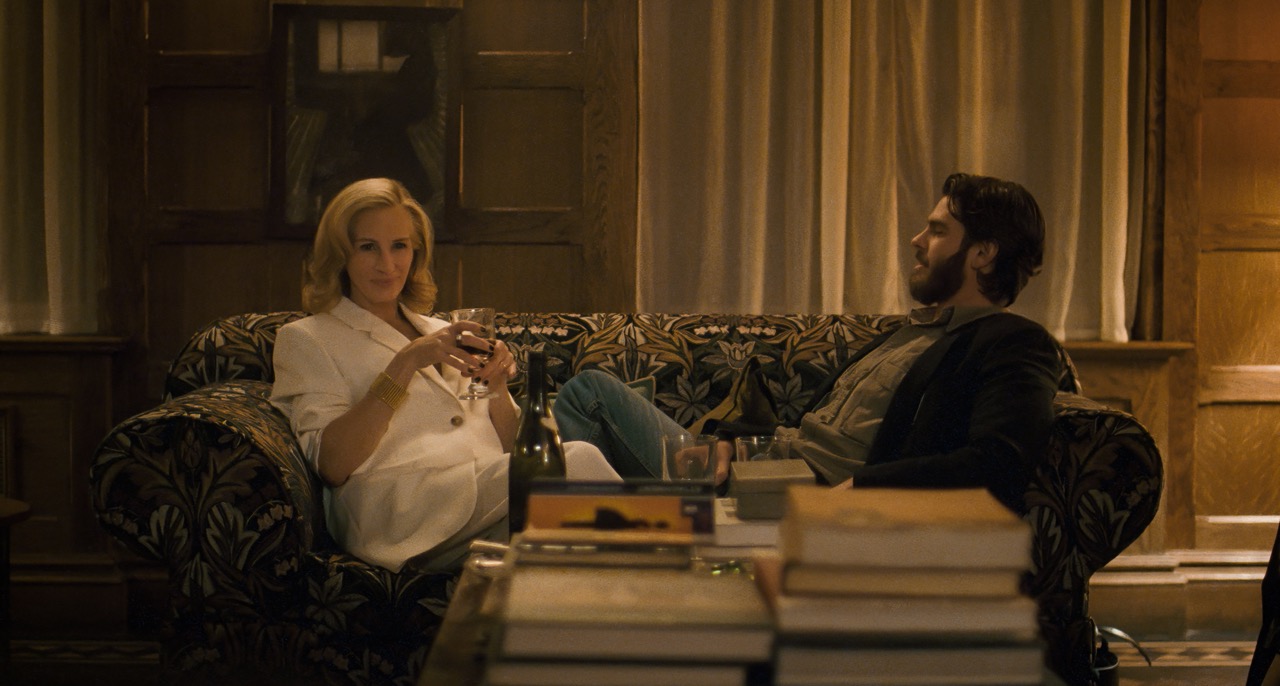
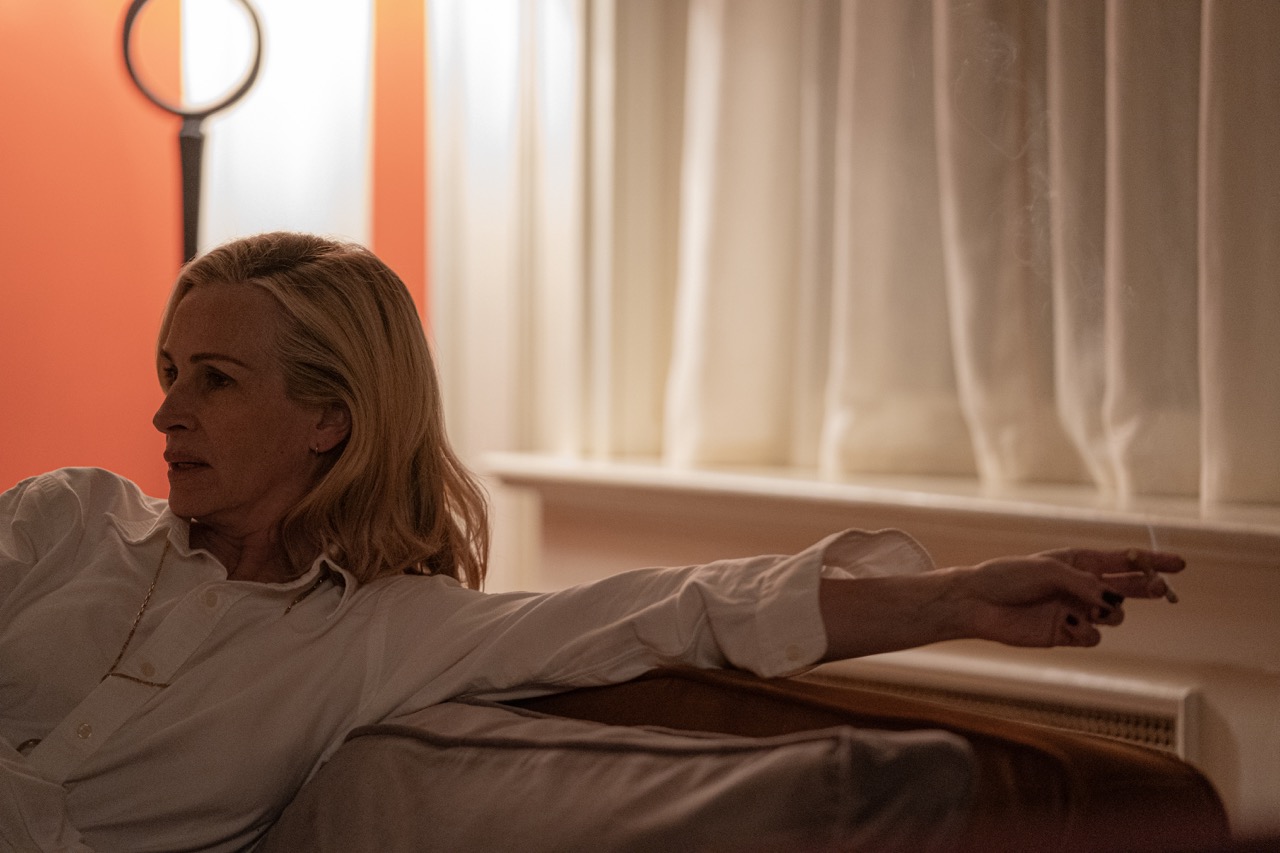
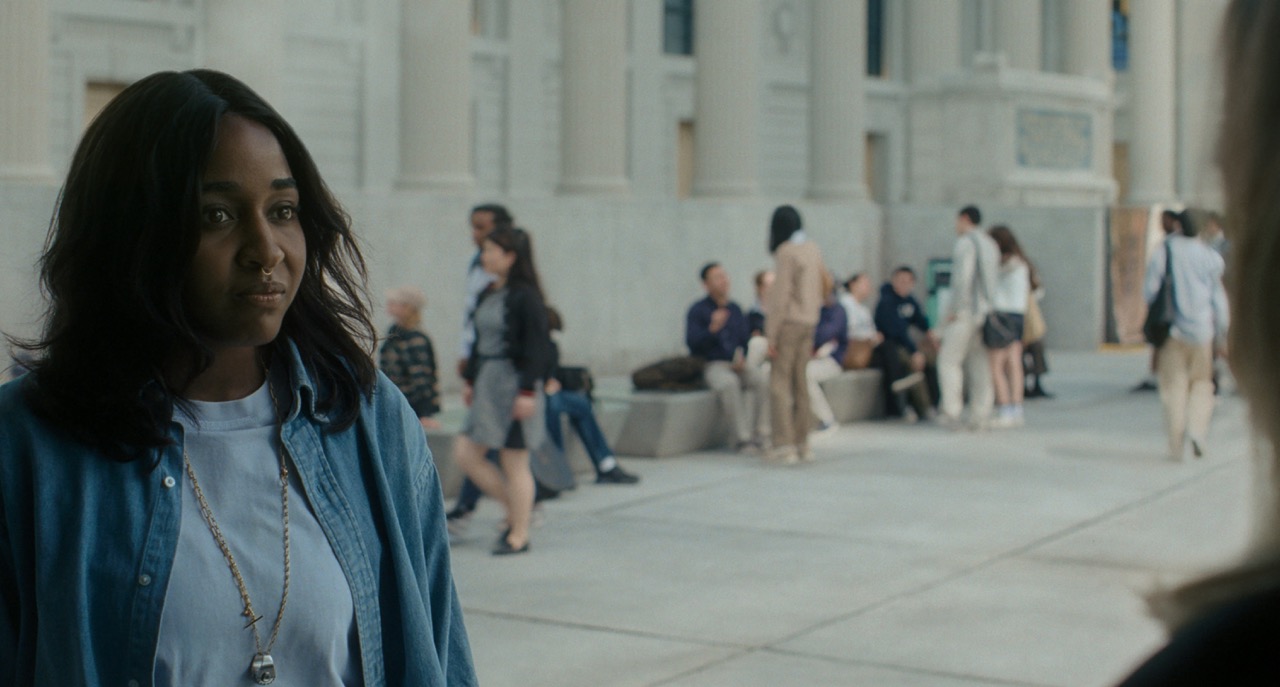
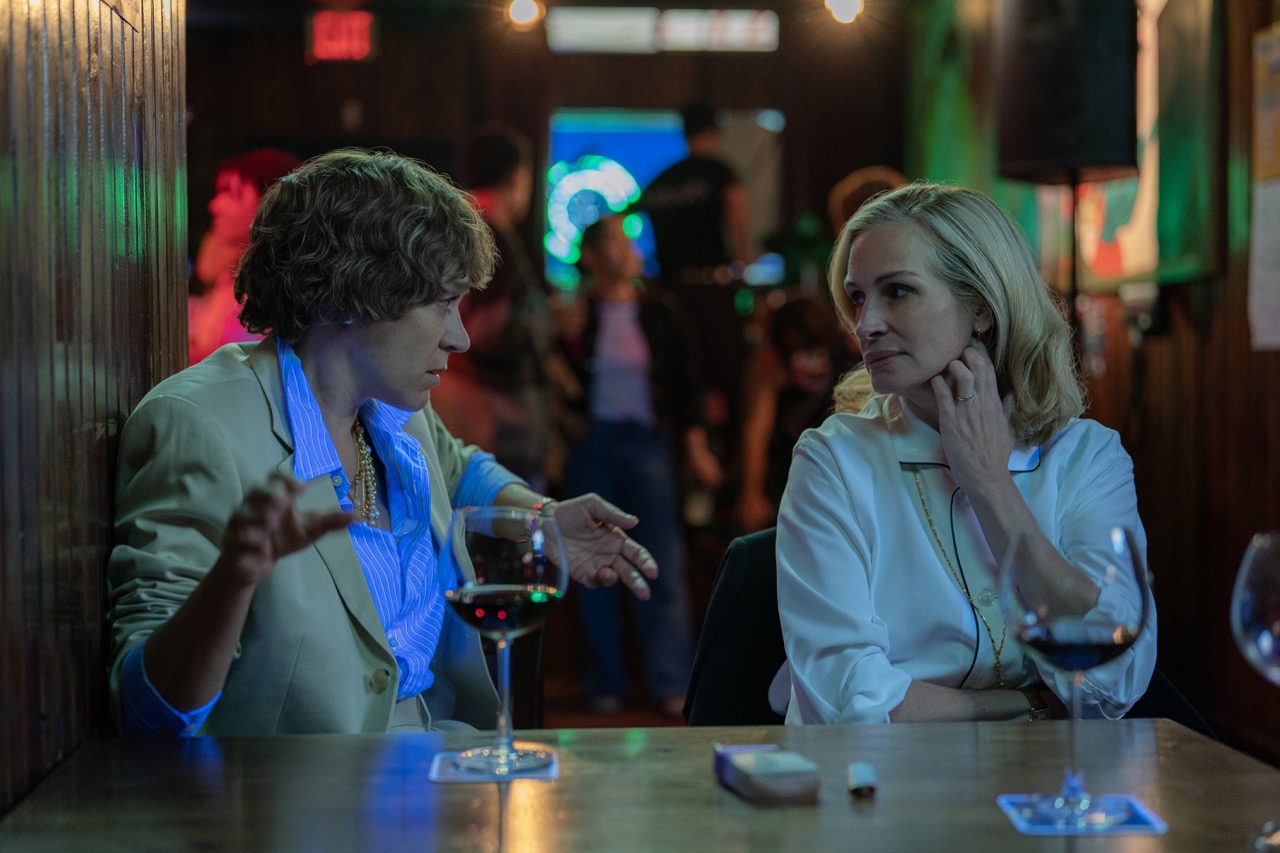
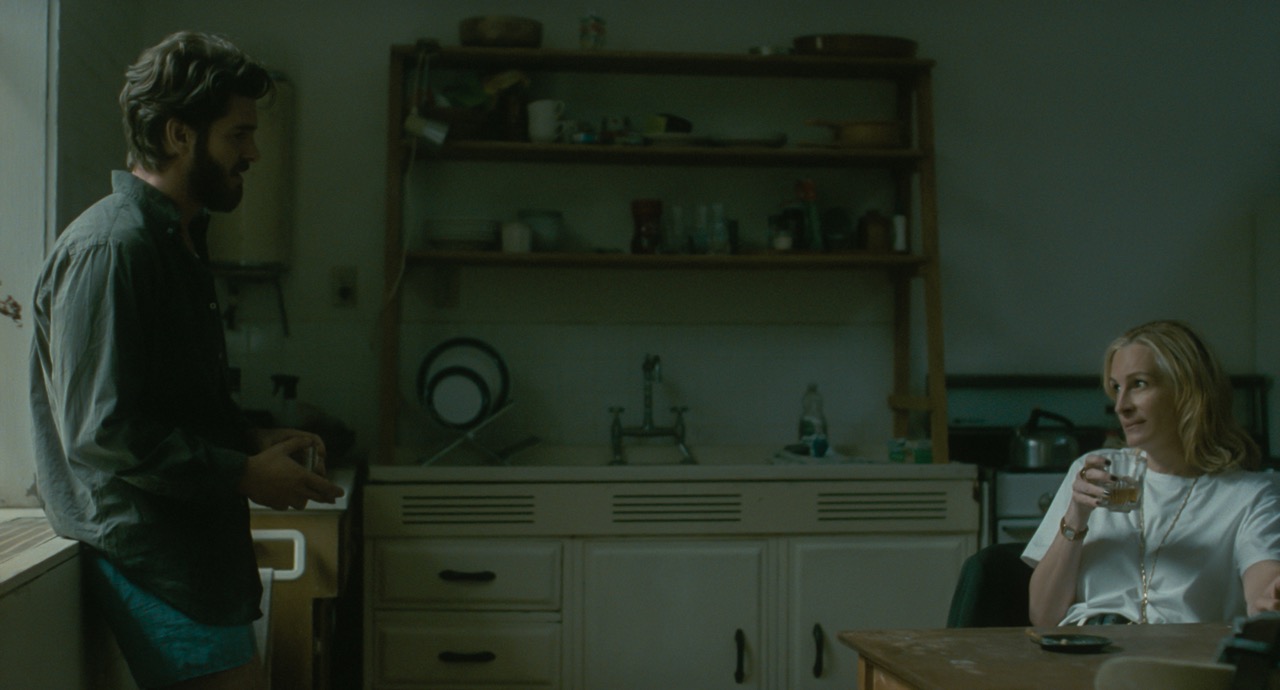
OP: Let’s talk about that iconic white suit Alma wears in the opening scene. Why white? And why place her in such stark contrast to the darker tones worn by everyone else?
GP: It is the first time we see Alma within her circle and I wanted right away to send the message to the viewer of how alluring she is to others around her and how all the students, including Maggie and Hank (Andrew) and her husband Frederik (Michael) all circle around her and how she stands out. I found the white suit and just a gold cuff would give that chic boldness.
OP: Alma’s gold magnifying-glass pendant — which she’s often seen fiddling with — is such a striking detail. How did you think about accessories when approaching costume?
GP: I chose very few accessories. Accessories were a game of balance between high end chic jewelry like the magnifying glass gold pendant and her rings and more casual accessories like loafers, flat shoes (never heels) and an L.L Bean bag. I thought again how this would say things about Alma and give layering to her personality through styling.
OP: Did Julia Roberts’ personal style—like her famous Golden Globes Armani suit or other slouchy, masculine-leaning looks—influence your vision for Alma? And what about Ayo’s style?
GP: Yes, Julia in her Golden Globes Armani suits was absolutely on my mood board! And others of her in jeans and blazer etc.. she was the perfect Alma inspiration. Together with images of women artists, women writers.. working at home or going about their day.. and women with effortless and timeless style like Diane Keaton, Tina Chow, Joan Didion etc.. those were all on my mood board.
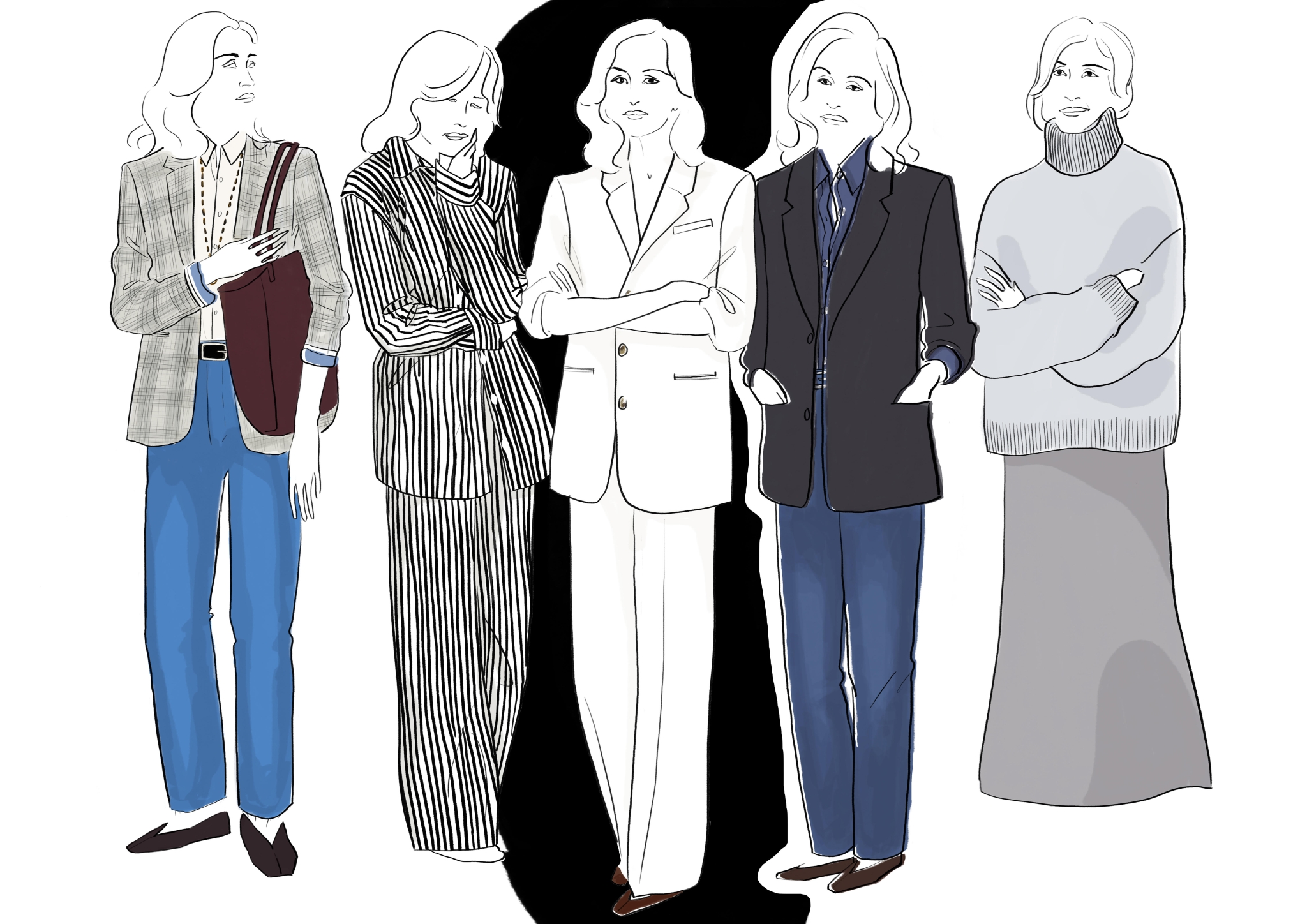
Sketches for Julia Roberts as Alma in Luca Guadagnino’s After the Hunt. Courtesy of Giulia Piersanti.
OP: Personally, I was thrilled to see Chloë Sevigny in the film. She has such a distinct point of view on fashion. What was your collaboration like with her?
GP: This is my third time working with Chloé and I love to work with her so much! She will never back down from a challenge (like cutting her long blond hair at a random small Italian town barber for a military look on We are Who We Are (TV series) She is an actor who really gets costumes and is amazing to work with.
OP: Hank’s descent feels quite literal — messy, grungy — while Alma and Maggie’s shifts are more subtle. Was the movement from lighter to darker tones, or from rigid tailoring to softer silhouettes, intentional?
GP: It was intentional to choose clothing with straight lines and a cold color palette throughout the film. I did not want the characters to feel comfortable, cozy nor soft. I almost never used soft fabrics nor dresses nor prints. The radical change only happens in the last scene when it’s 5 years later.
GP: There’s a sense of comfort in those early morning scenes with Alma in bed before the alarm. Her striped pyjamas felt like a moment of safety. Can we talk about the “cozies”? Was the pyjama styling a conscious choice—and what did it signify?
OP: I don’t necessarily agree. I don’t think Alma’s sleep routine ever feels safe or cozy… and again tried to choose a cold grey striped pajama.
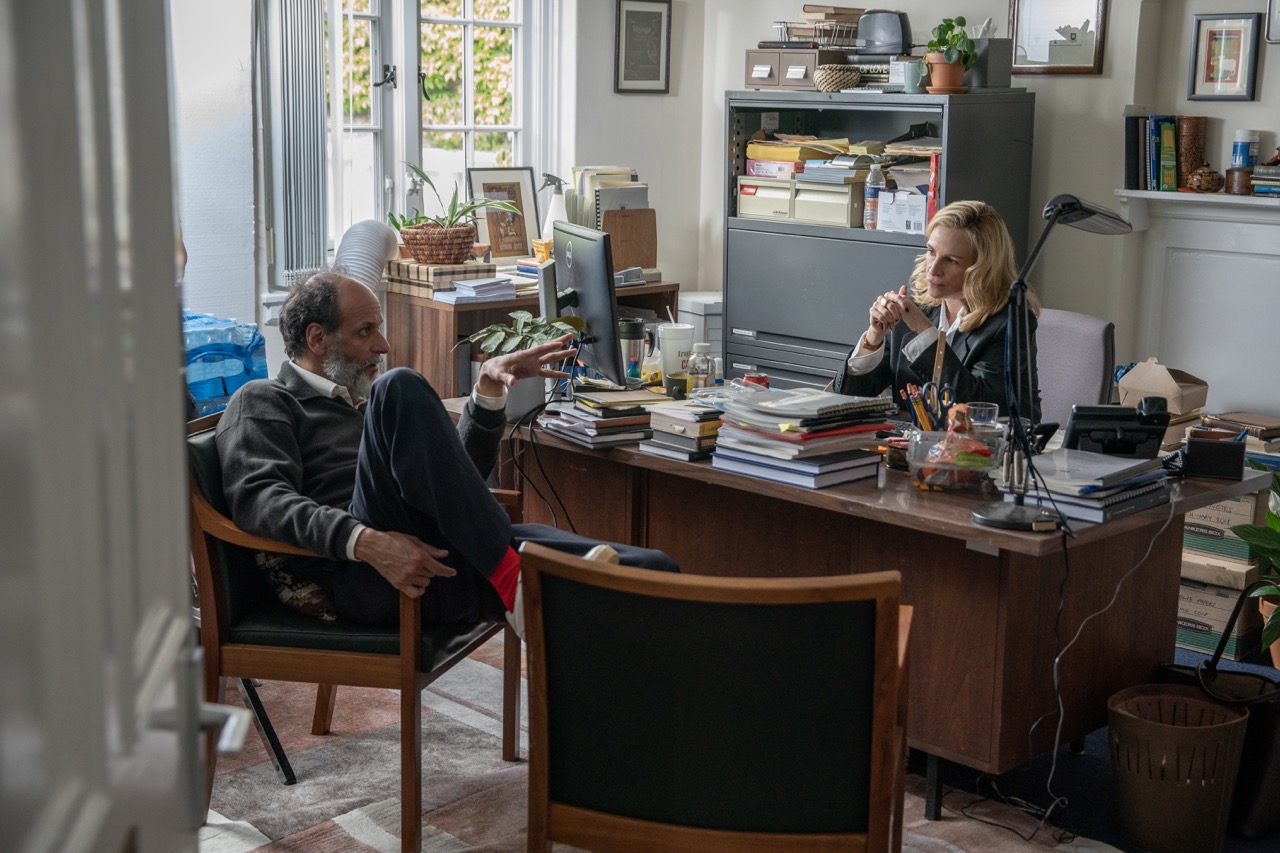
Director Luca Guadagnino and actor Julia Roberts on the set of After the Hunt, from Amazon MGM Studios. Photo Credit: Yannis Drakoulidis. © 2025 Amazon Content Services LLC. All Rights Reserved.
“Julia in her Golden Globes Armani suit was absolutely on my mood board! She was the perfect Alma inspiration. Together with images of women artists, and women with effortless and timeless style like Diane Keaton, Tina Chow, Joan Didion etc.”
Giulia Piersanti
OP: A curious detail — nearly every character had dark nail polish. Was that a deliberatechoice? (I’ll admit, I’m wearing dark polish myself as I type this…)
GP: This has more to do with Fernanda Perez, our talented make up artist.
OP: Alma’s final look — a soft Céline sweater and skirt — felt like a quiet exhale after so much control and tension. Was that shift in silhouette and texture meant to signal emotional transformation, or perhaps a sense of release?
GP: Absolutely yes. In the last scene, a few years later, we find a different Alma and a very different Maggie. It is the moment, the after the hunt moment. Alma has been relieved of the burden of her secret. She has the job she wanted in the beginning of the film. Her wardrobe is now softer, cozier. All the clothing I chose not to put throughout the film, now she wears. A cozy sweater in a lighter color, a skirt. Maggie instead has broken away from the spell of Alma and doesn’t try to imitate her anymore. She is also softer, more feminine in a print dress.
OP: And finally, in one scene, Maggie critiques “performative discontent.” In an age of constant commentary, how do you stay grounded in your creative instincts when designing for film?
GP: I am a very lucky person being able to work in different arts, moving between fashion design and costume design, being able to do both allows me to have an outsider’s perspective. My creative process is very instinctive. When I create costume design I am of course interested in reality but I am mostly interested in projecting my personal experience of reality. I like to study people and why they choose to wear one thing rather than another.

